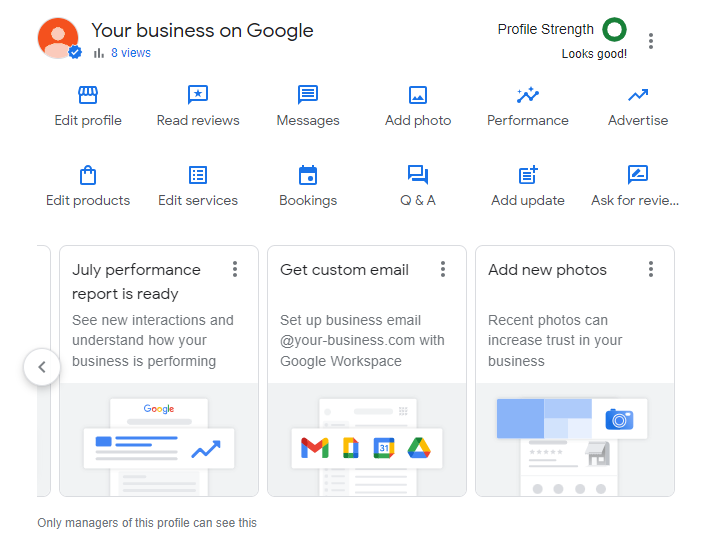In the ever-evolving digital landscape, local search engine optimization (SEO) has emerged as a pivotal strategy for businesses aiming to connect with their local audience. Whether you’re a web design enthusiast, an SEO expert, or a small business owner, understanding the intricacies of local SEO can be a game-changer. In this comprehensive guide, we’ll delve into 12 essential steps to optimize your online presence for local search, helping you rise above the competition and make a lasting impact.
1. Content is King Let’s start with the foundation: content. In the world of local SEO, high-quality, unique content is your most potent weapon. Craft informative, valuable, and locally relevant content that resonates with your target audience. Address their specific needs and concerns, showcasing your expertise in the local industry. When writing content for a locally owned business, include the city name in blog articles. Take photos in the city and upload those images with the geo-location tags included. If the city has landmark statues or outdoor artwork, try to find a way to incorporate a story about that in one of your blog articles. Remember, each city is unique so take advantage of what your city has to offer and see if you can create a story that aligns with your local culture.
2. Master Keyword Research Keywords are the compass of local SEO. Conduct thorough keyword research to identify the terms and phrases your local audience is using to find businesses like yours. Ensure these keywords are integrated naturally into your title tag, content, meta tags, and headers.
3. Embrace Mobile Optimization Mobile optimization isn’t just a nice-to-have; it’s a must. Google prioritizes mobile-friendly websites in its rankings, and considering the growing use of smartphones, this is essential. Ensure your website is responsive and loads swiftly on mobile devices. Test your page speed on using Google’s PageSpeed Insights.
4. Build Quality Backlinks Backlinks are like digital endorsements. Focus on quality over quantity when it comes to backlinks. Earning high-quality backlinks from authoritative local sources can significantly boost your website’s authority. Try to connect with other local businesses when it makes sense and share links when possible.
5. NAP Consistency Consistency is key when it comes to your business’s Name, Address, and Phone number (NAP) across online listings. Any discrepancies can confuse both users and search engines, so keep your NAP information uniform.
6. Steer Clear of Virtual Offices Virtual office locations are a red flag for Google. It’s best to avoid them in your local SEO strategy. Only use off-site locations if they are fully staffed during business hours to avoid potential penalties. If you have multiple physical locations, create a website for each location so that you achieve better LOCAL SEO results.
7. Implement Schema Markup Schema markup is the secret sauce behind rich search results. Implement it properly to make your listings more appealing in search results. It’s like providing a visual bonus to users, which can lead to higher click-through rates. Learn how to use schema tags for a LocalBusiness.
8. Know Your Competition Understanding your competitors is crucial. Analyze their strategies, especially those succeeding in local SEO. This knowledge will help you identify gaps in your approach and areas where you can excel.
9. Tailor Content Locally Don’t settle for merely swapping location names in your content. Tailor your content to address local interests, concerns, and trends. Make it genuinely valuable to your local audience. Do not use a website template for all of your locations where the only thing that is unique between all of them is the city name and address. (Stop being lazy! ) If all of your locations sell the same exact product or offer the same exact service, you need to present the information in a different way that makes each website unique. Example: “Green Chairs in Dallas” (product + city name).
10. Master Review Management Reviews play a pivotal role in local SEO. Manage your reviews proactively, and address negative feedback promptly. Google values trustworthiness, and positive online sentiment contributes to it. Reputation Management of your Google My Business Profile is extremely important for local businesses. You need to make sure as many of your customers as you can get to leave a positive to review on your GMB page! When you first start out, try not to get more than 10 reviews in one day. It is better to have the reviews trickle in on different days. After you get 40 local reviews, you will start to see your location moving up the search engine results page.
11. Craft a Social Media Strategy While social media might not be a direct ranking factor, it’s a powerful tool for building your brand’s local presence. Engage with your local audience, showcase your expertise, and foster relationships. When people leave comments about your company on social media, this is called a citation. Citations are signals to Google that people are talking about your company. The purpose of SEO citations is to better assist people from a given location in finding businesses that offer the services and products they’re interested in. They also factor into your SEO rankings on Google and other search engines. (read more about citations.)
12. Regular Audits The SEO landscape is dynamic. Regularly audit your strategies to ensure they align with the latest updates and best practices. Keep your local SEO efforts in top shape by staying informed and adaptable.
In conclusion, mastering local SEO involves a multi-faceted approach. Remember, the world of local SEO is ever-changing, so stay curious, keep learning, and adapt to stay ahead of the curve.




